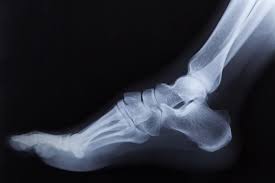A neuroma is a painful condition that involves a pinched nerve, sometimes occurring between the toes. This benign growth of nerve tissue can cause a sharp, burning pain in the ball of the foot, and your toes might sting or feel numb. While the discomfort can be persistent, several non-surgical approaches are available to manage the pain and provide relief. Here is more information about how non-surgical treatments can help manage pain:
Adjusting Footwear
One straightforward method for managing neuroma pain involves changing your footwear. Shoes that are too tight or have a narrow toe box squeeze the bones in the foot, which in turn compresses the nerve and aggravates the neuroma. Switching to shoes with a wider toe box provides your toes with more room, thereby reducing pressure on the affected nerve.
In addition to wider shoes, avoiding high heels is also beneficial. High heels force your body weight onto the ball of your foot, increasing pressure and neuroma symptoms. Opting for shoes with lower heels and good arch support helps distribute your weight more evenly across your feet.
Custom orthotic devices or padded shoe inserts may also offer support and cushion the area, further alleviating discomfort. Physical therapy exercises can also be an effective way to strengthen the surrounding muscles and improve foot alignment, relieving stress on the nerve. Applying ice packs to the affected area may help reduce inflammation and provide temporary relief from pain.
Applying Cryotherapy
Cryotherapy is a treatment that uses localized freezing temperatures to target the affected nerve. During this procedure, a small probe is guided to the neuroma, where it applies cold to deaden the nerve tissue. This process helps to reduce the transmission of pain signals from the nerve to the brain. By disrupting the nerve’s ability to send pain signals, cryotherapy provides a non-invasive approach to finding relief without the need for surgical removal of the neuroma itself.
Relieving Nerve Tension
Specific physical therapies are designed to relieve the tension on the nerve. Stretching exercises for the feet and calves are used to help reduce the pressure that contributes to nerve irritation. A medical provider may guide you through specific movements that improve foot mechanics and flexibility.
A nerve release is a minimally invasive procedure that may be needed in some cases. These approaches aim to create more space for the nerve, which may lessen the pinching and irritation that cause pain. Consistent practice of these exercises and techniques may contribute to long-term management of symptoms.
Reducing Pain
Over-the-counter anti-inflammatory medications, such as ibuprofen, may help reduce both pain and swelling associated with a neuroma. These medications work by lowering inflammation around the nerve. Another option is a corticosteroid injection.
A doctor can inject a steroid medication into the area of the neuroma, which is a powerful way to decrease inflammation and swelling around the nerve. This reduction in inflammation may lead to a noticeable decrease in pain, providing temporary or sometimes lasting relief. The number of injections is usually limited to avoid potential side effects.
Get Treated for Neuroma Pain
Navigating the discomfort of a neuroma can be challenging, but non-surgical treatments offer practical paths toward relief. From simple footwear adjustments to targeted medical procedures, there are various ways to manage your symptoms and improve your quality of life. Understanding these options allows you to take an active role in your care. Schedule a consultation with a foot and ankle clinic today to discuss your symptoms and explore the right treatment plan for you.














